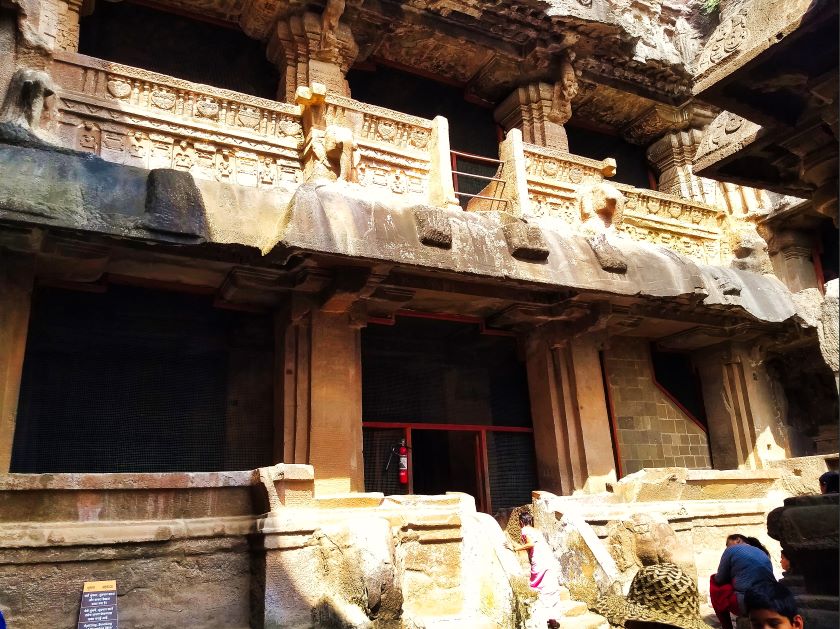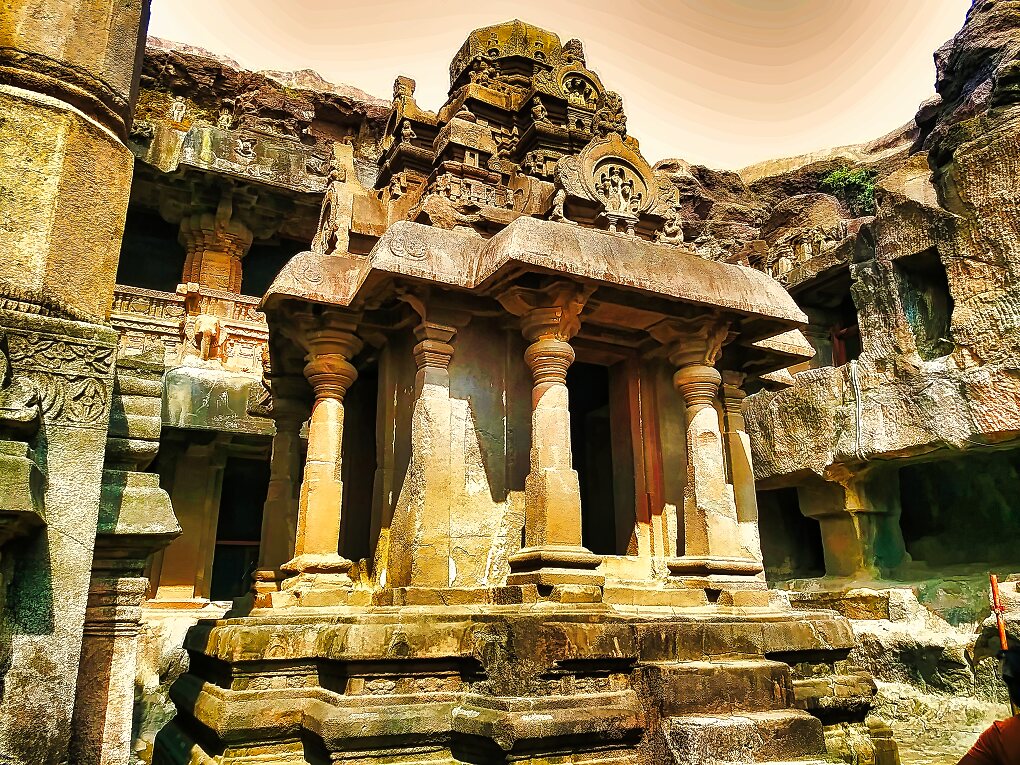
Ellora Cave 32 is the largest and finest of the Jain caves in Ellora. There are five Jain caves which lie to the north of the acclaimed Kailasa Temple. The Jain temples date back to the 10th and 11th centuries.
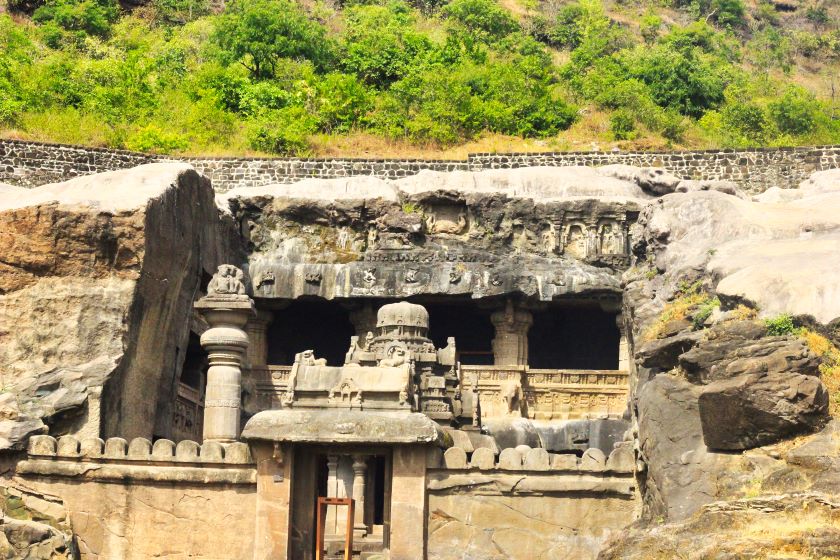
History
Construction of the Ellora caves thrived under the Yadava kings. Deogiri, their capital, was 10 km from Ellora. They built Ellora Cave 32 in the 10th and 11th centuries. Jain worshipers and visitors used the caves late into 13th century. But Jain religious activity came to an end after the region lurched into Islamic rule.
The idols in Ellora Cave 32 show significant damages. However the complex carvings and natural objects remain untouched. The desecration of the idols and images are attributed to the Muslim armies in the 15th to 17th centuries.
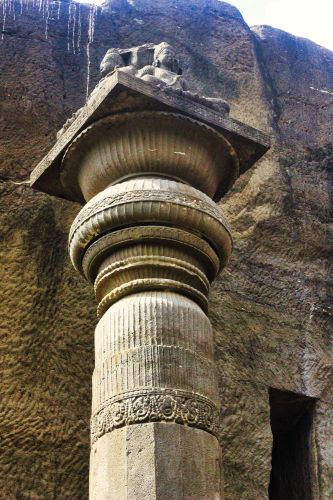
Architecture of Ellora Cave 32
The Jain cave belonging to the Digambara sect is smaller than the Hindu caves. However there are certain similarities in the pillared verandas, symmetric mandapa and pooja worship. The cave has been cut into the basalt mountain without the aid of modern technologies or tools.
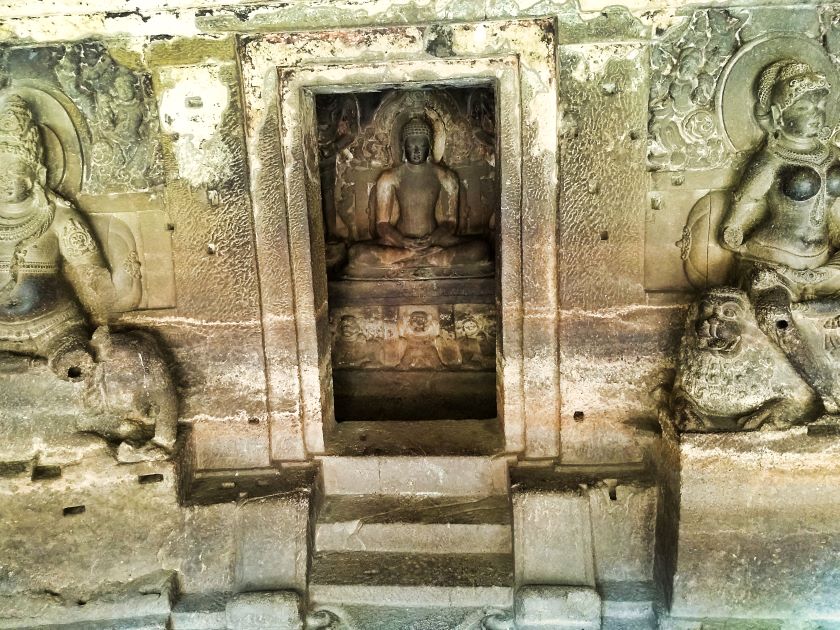
The cave has two storeys. A modest gateway leads to an open courtyard. A monolithic shrine of the Tirthankaras occupies the middle. A tall pillar called manastambha is to the right and a huge elephant to the left. The manastambha has a crown of four seated figures. It is a representation of Jain philosophy and a free-standing pillar.
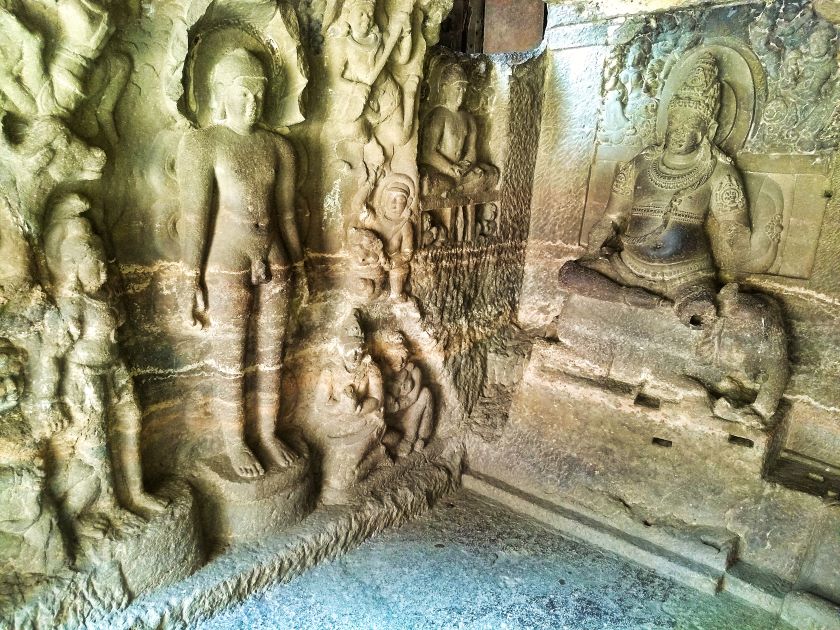
Monuments and Rock Carvings in Ellora Cave 32
A staircase leads to a large shrine on the first floor. The deity is Mahavira, the last Tirthankara and founder of the Jain religion. There are two smaller shrines on the east and west, both dedicated to Mahavira.
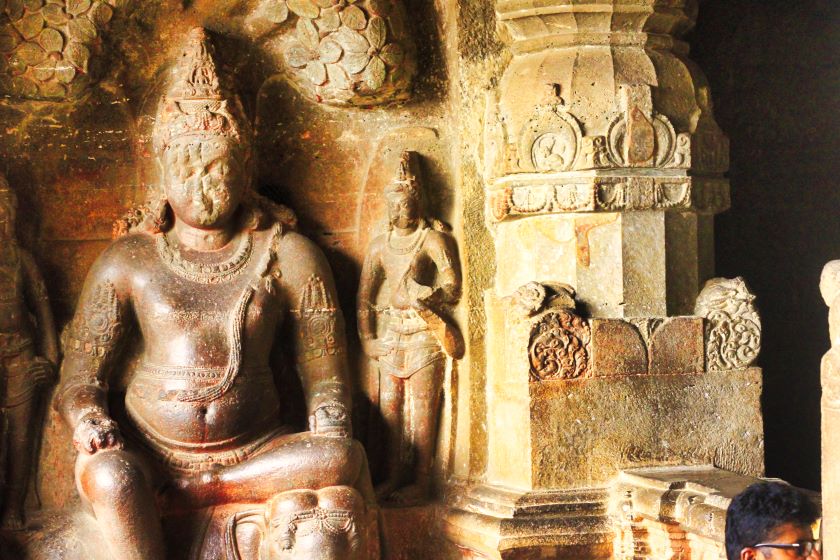
The shrines have idols of Mahavira seated in Padmasana pose. The central shrine shows Sarvatobhadra. It is a temple architectural style characterised by a door in each of the four cardinal directions of the sanctum. There are notable carvings on the pillars and walls. Here the four Tirthankaras of Jainism are aligned to the cardinal directions. Rishabha (1st), Neminatha (22nd), Parsvanatha (23rd) and Mahavira (24th) are the four Tirthankaras.
Mahavira may be regarded as the founder of Jainism. According to tradition, he based his doctrines on the teachings of the 23rd Tirthankara, Parshvanatha.
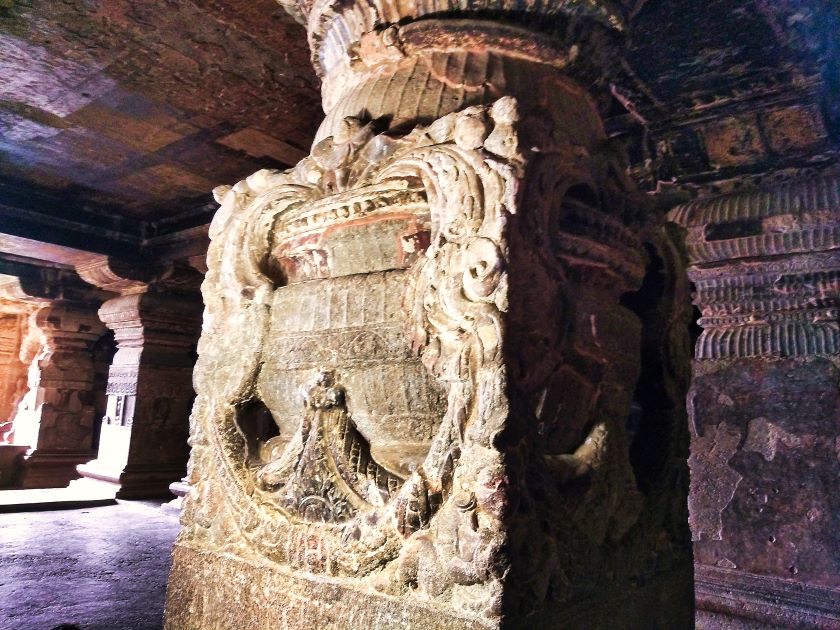
A massive lotus on the ceiling is extraordinary. Numerous rock carvings encircle the temple. Matanga Yaksha is the God of Prosperity. He sits on an elephant under a banyan tree. Ambika Devi is the protector goddess of the second Tirthankara, Neminatha. She sits on a lion under a mango tree.
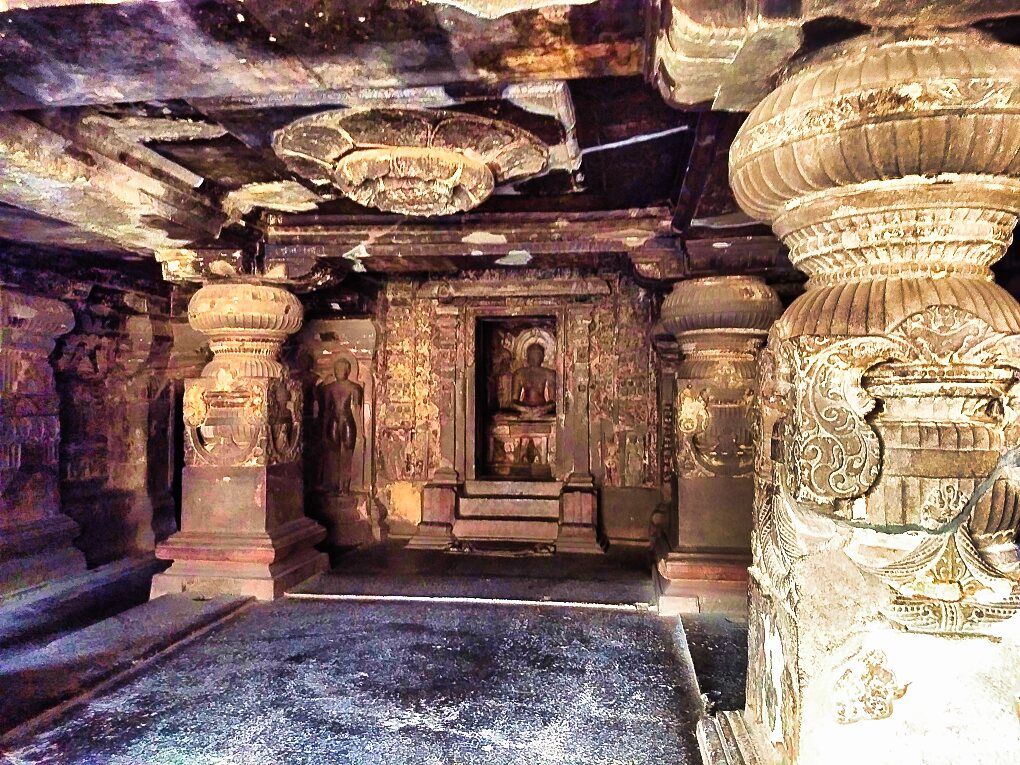
Getting There
Ellora Caves are 29 km (50 min) from Aurangabad railway station. The nearest airport is Aurangabad International airport, at a distance of 35.3 km (58 min) via SH 22.
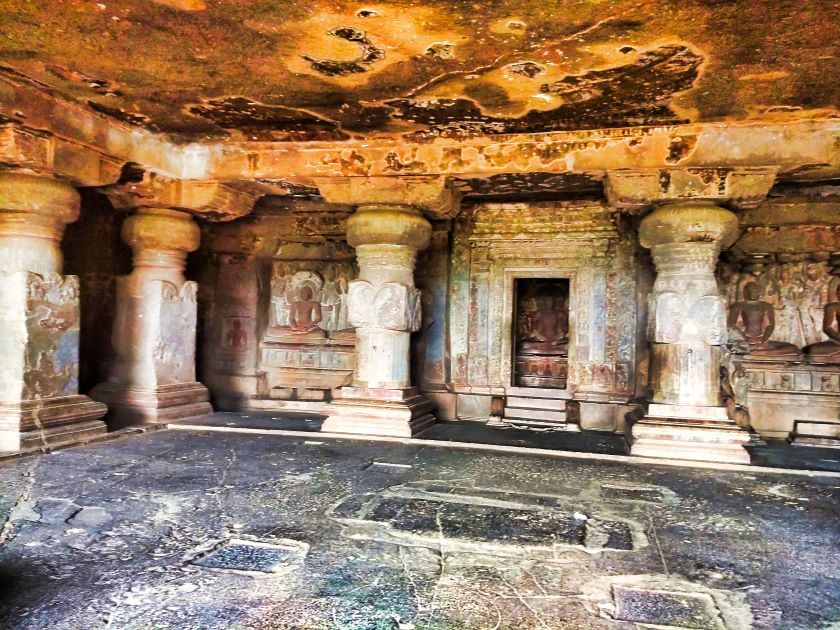
If you liked the post, you could…
Join more than 5,000 fans of UASATISH by liking us on Facebook, or follow us on Twitter and Instagram.
